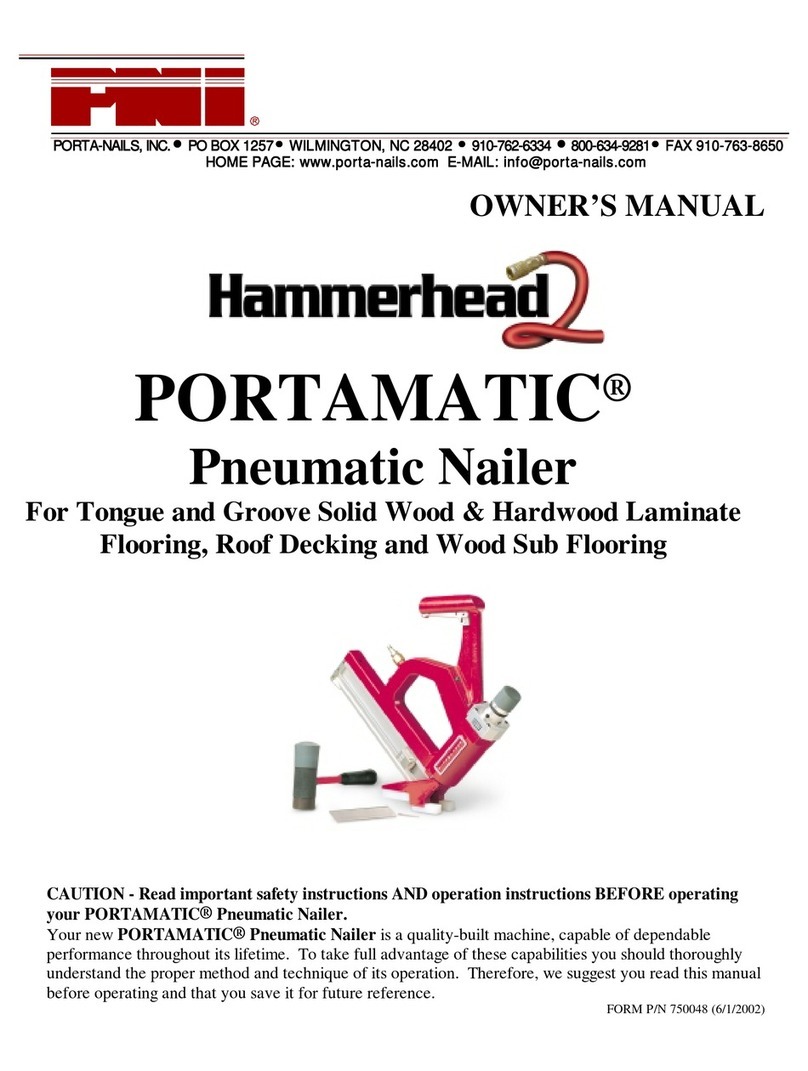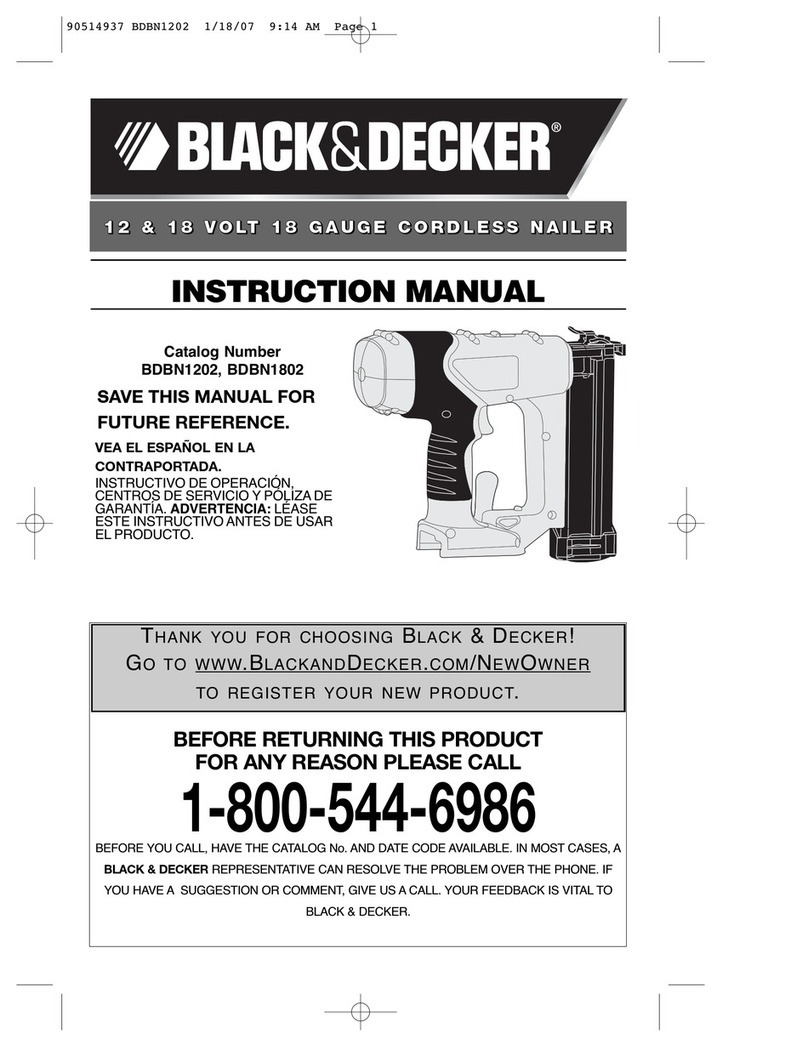10
AIR SUPPLY AND CONNECTIONS
WARNING:
!
Do not use oxygen, combusble gases, or boled gases as
a power source for this tool as tool may explode, possibly
causing injury.
FITTINGS:
Install a male plug on the tool which is free flowing and which will release air pressure
from the tool when disconnected from the supply source.
HOSES:
Air hoses should have a minimum of 150 PSI (10.6 kg/cm2) working pressure rang
or 150 percent of the maximum pressure that could be produced in the air system.
The supply hose should contain a fing that will provide “quick disconnecng” from
the male plug on the tool.
SUPPLY SOURCE:
Use only clean regulated compressed air as a power source for this tool. NEVER USE
OXYGEN, COMBUSTIBLE GASES, OR BOTTLEDGASES, AS A POWER SOURCE FOR THIS
TOOL AS TOOL MAY EXPLODE.
REGULATOR:
A pressure regulator with an operang pressure of 0 - 125 PSI (0 - 8.79 KG/CM2) is
required to control the operang pressure for safe operaon of this tool. Do not
connect this tool to air pressure which can potenally exceed 200 PSI (14 KG/CM2)
as tool may fracture or burst, possibly causing injury.
OPERATING PRESSURE:
Do not exceed recommended maximum operang pressure as tool wear will be
greatly increased. The air supply must be capable of maintaining the operang
pressure at the tool. Pressure drops in the air supply can reduce the tool’s driving
power. Refer to “TOOL SPECIFICATIONS” for seng the correct operang pressure
for the tool.
FILTER:
Dirt and water in the air supply are major causes of wear in pneumac tools. A filter
will help to get the best performance and minimum wear from the tool. The filter
must have adequate flow capacity for the specific installaon. The filter has to be
kept clean to be effecve in providing clean compressed air to the tool. Consult
the manufacturer’s instrucons on proper maintenance of your filter. A dirty and
clogged filter will cause a pressure drop which will reduce the tool’s performance.
LUBRICATION:
Frequent, but not excessive, lubricaon is required for best performance. Oil
added through the air line connecon will lubricate the internal parts. Use Air Tool
Lubricant, Mobil Velocite #10, or equivalent. Do not use detergent oil or addives as
11
these lubricants will cause accelerated wear to the seals and Piston Cushion in the
tool, resulng in poor tool performance and frequent tool maintenance.
If no airline lubricator is used, add oil during use into the air fing on the tool once
or twice a day. Only a few drops of oil at a me are necessary. Too much oil will only
collect inside the tool and will be noceable in the exhaust cycle.
COLDWEATHER OPERATION:
For cold weather operaon, near and below freezing, the moisture in the air line may
freeze and prevent tool operaon. We recommend the use of WINTER FORMULA air
tool lubricant (NEW-MATIC Winter Formula or equivalent) or permanent anfreeze
(ethylene glycol) as a cold weather lubricant.
CAUTION: Do not store tools in a cold weather environment to prevent frost or
ice formaon on the tools operang valves and mechanisms that could cause tool
failure. NOTE: Some commercial air line drying liquids are harmful to O-rings and
seals – do not use these low temperature air dryers without checking compability.
TOOL OPERATION
BEFORE HANDLING OR OPERATING THIS TOOL:
I. READANDUNDERSTANDTHE WARNINGS CONTAINEDIN THIS MANUAL.
II. REFER TO “TOOL SPECIFICATIONS” IN THIS MANUAL TO IDENTIFY THE PROPER
SYSTEM COMPONENTS USEDTO OPERATE YOUR TOOL.
IN ADDITION TO THE OTHER WARNINGS CONTAINED IN THIS MANUAL, OBSERVE
THE FOLLOWING FOR SAFE OPERATION
• Use the Portamac model 475 pneumac tool only for the purpose for which it
was designed.
• Never use this tool in a manner that could cause a fastener to be directed toward
the user or others in the work area.
• Do not use the tool as a hammer.
• Always carry the tool by the handle. Never carry the tool by the air hose.
• Do not alter or modify this tool from the original design or funcon without
approval from Porta-Nails, Inc..
• Always be aware that misuse and improper handling of this tool can cause injury
to yourself and others.
• Never clamp or tape the trigger or contact trip in an actuated posion.
• Never leave a tool unaended with the air hose aached.
• Do not operate this tool if it does not contain a legible WARNINGLABEL.
• Do not connue to use a tool that leaks air or does not funcon properly. Nofy
your nearest Porta-Nails, Inc. representave if your tool connues to experience
funconal problems.



























